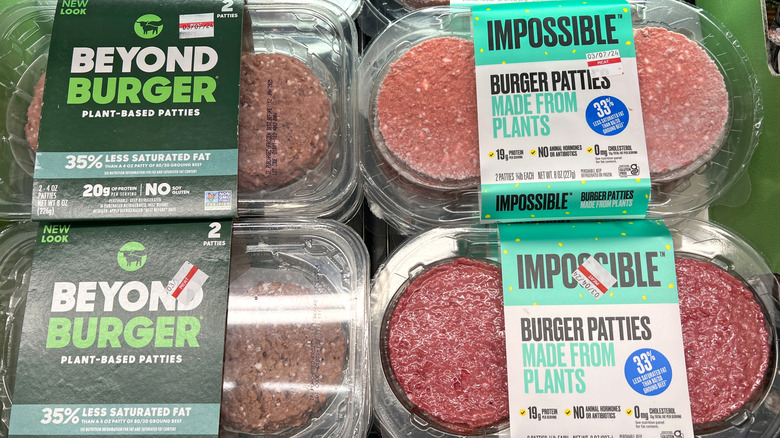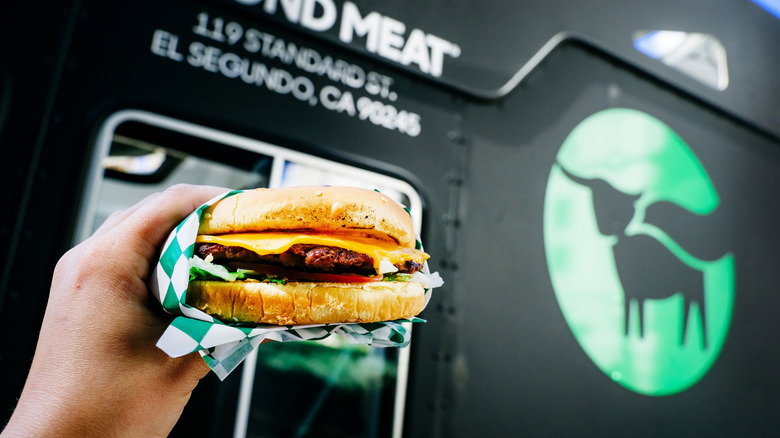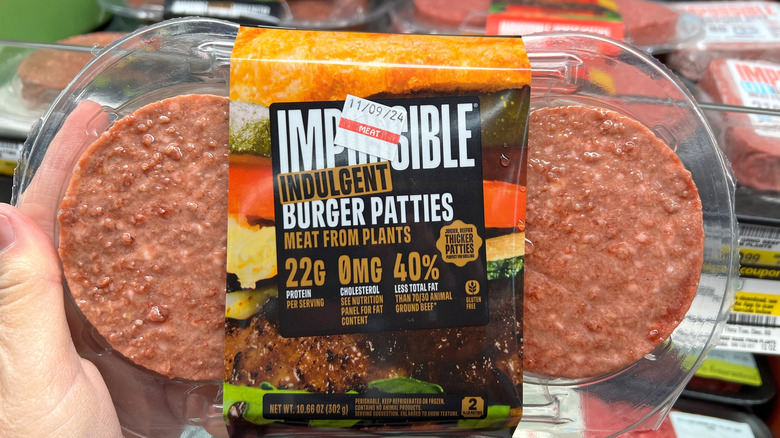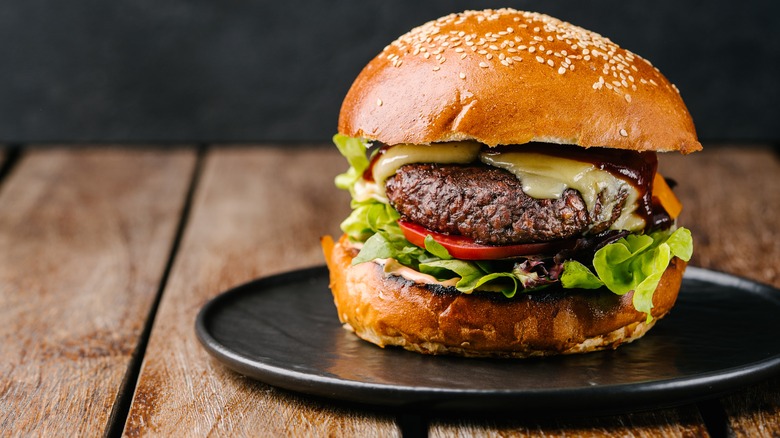Beyond Vs Impossible: What's The Difference Between These 2 Popular Plant-Based Burgers?
Plant-based burgers have come a long way from the early days of dry, flavorless veggie patties. As a long-time vegetarian, I have to say that science has really moved in our favor over the past few decades. Two brands in particular have revolutionized the industry: Beyond Meat and Impossible Foods. Both companies aim to replicate the taste, texture, and experience of eating real-meat beef, but they take different approaches to achieving this goal. The secret is that Beyond Meat and Impossible Foods use various plant-based proteins, fats, and other ingredients to mimic real meat, but the composition and cooking properties of each brand differ.
The biggest distinction lies in how these two brands achieve their "meaty" taste — each with a similar goal but different ingredients. Whether you're a flexitarian, vegetarian, or just curious about meat alternatives, understanding these differences can help you choose the best plant-based burger for your taste and dietary preferences.
Beyond Burgers are made with soy-free protein
Beyond Meat boasts about using non-GMO, plant-based ingredients to create a convincing meat substitute. The primary protein source in Beyond Burgers comes from peas and brown rice, offering a high-protein alternative without relying on soy. For fat, the patties contain coconut oil, rapeseed oil, and expeller-pressed canola oil to provide the rich juiciness typically found in beef. The company also uses methylcellulose, which is a plant fiber derivative, to create a hefty, sturdy texture.
To replicate the bite you get with real meat, Beyond Meat then applies heating, cooling, and pressure to its plant proteins, which helps create a fibrous texture somehow similar to muscle tissue. Unlike Impossible Burgers, Beyond Burgers do not contain heme. Instead, Beyond relies on beet juice to give its patties a meaty appearance and flavor. If you prefer a soy-free option with a more neutral flavor profile, Beyond Burgers may be the better choice for you.
Impossible Burgers rely on heme for meaty flavor
Impossible Foods takes a lab-inspired approach to plant-based meat, with a key focus on recreating the taste and especially the texture of beef. The main protein source in Impossible Burgers is soy, and it adds in the amino acid tryptophan. The standout ingredient that differentiates Impossible from Beyond is heme, an iron-rich molecule found in both plants and animals.
Impossible Foods produces heme using a fermentation process of soy leghemoglobin, giving its burgers a distinctly beefy flavor and aroma when cooked. In addition, Impossible Burgers use coconut and sunflower oils for fat, creating a juicy texture that closely resembles ground beef. The heme content also contributes to a more authentic "bleeding" effect when the burger is cooked, making it particularly appealing to those transitioning from meat to plant-based alternatives. The result is a burger with a softer, more tender texture that actually changes color and feel as you cook it, just like animal meat. If you're looking for the most realistic meat substitute, Impossible Burgers might be your top pick.
Either alternative is ideal for delicious meat-free burgers
The great news is that both Beyond Meat and Impossible Foods are delicious meat alternatives, and if you buy the "ground beef" option, they can be used in endless different recipes. You can use them both to make the ultimate all-American cheeseburger, without changing any other component in the recipe, and just making sure you grill to perfection. Or, take things up a notch and make a meat-free Juicy Lucy cheeseburger — a burger with melted cheese stuffed inside the patty, creating an irresistible molten center that takes the cheeseburger concept to a new level. If you want a meat-free crispy sandwich, try a comforting patty melt, layering your plant-based patty between slices of toasty rye bread with caramelized onions and cheese.
I also love to use these substitutes for meatballs of all kinds. Whether you're making Italian-style meatballs for pasta, Swedish meatballs with a creamy sauce, or spiced Middle Eastern kofta, these plant-based options hold up beautifully in any recipe.




